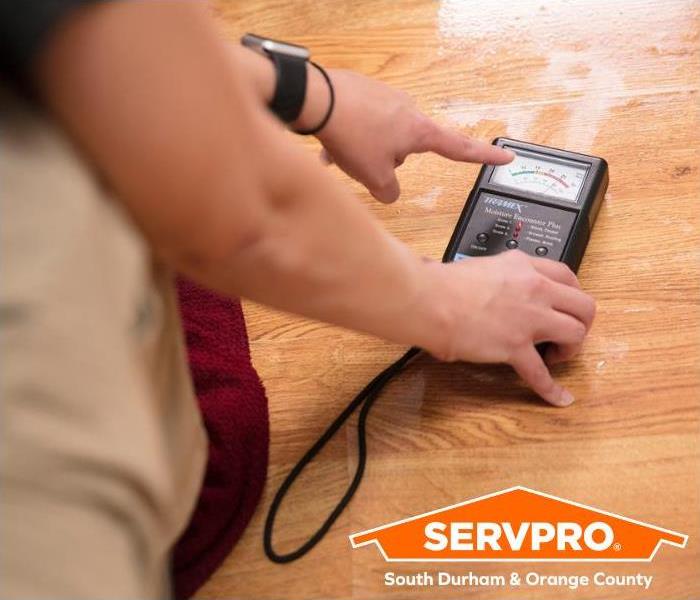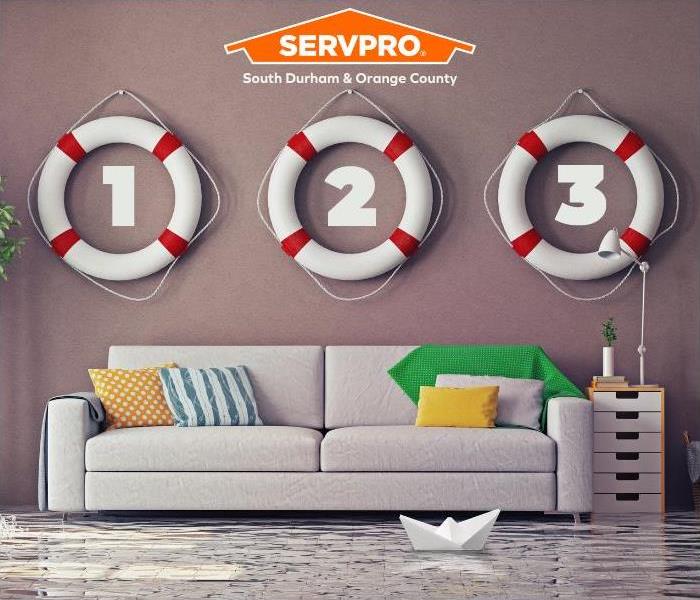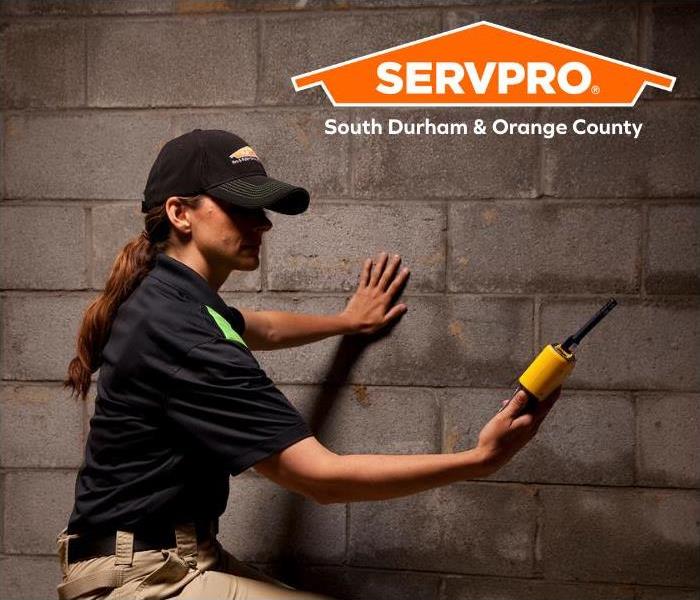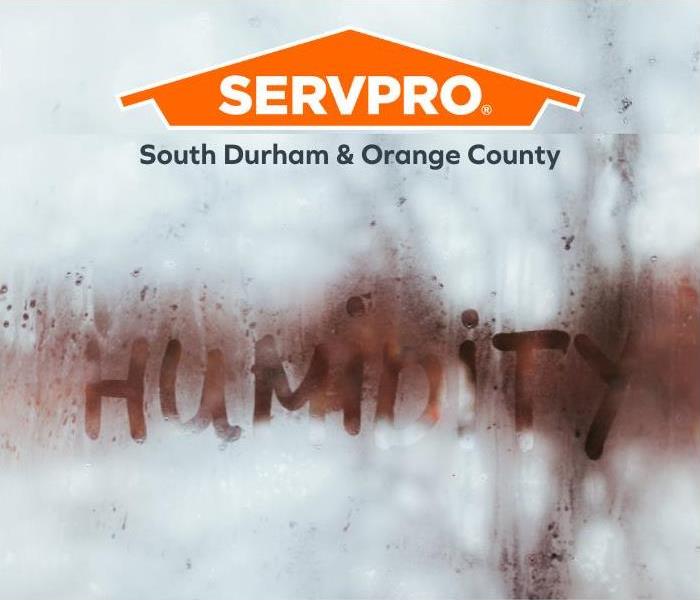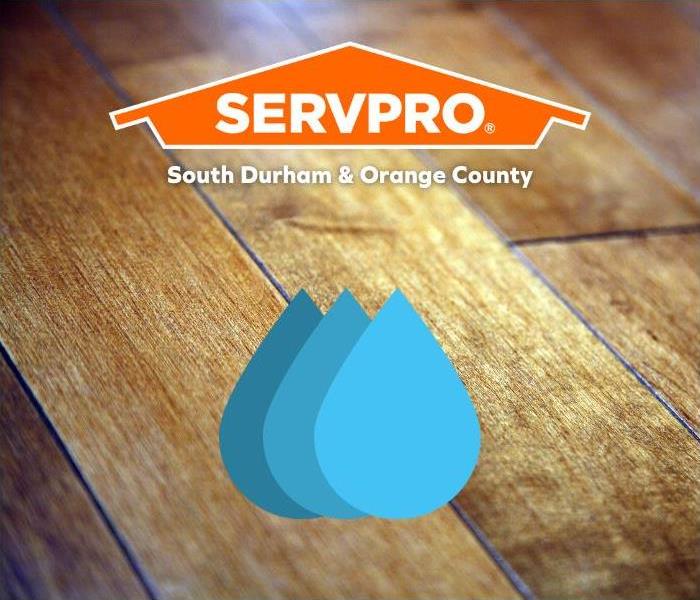Recent Water Damage Posts
Quick and Easy Tips to Prevent Home Water Damage While on Vacation
7/11/2022 (Permalink)
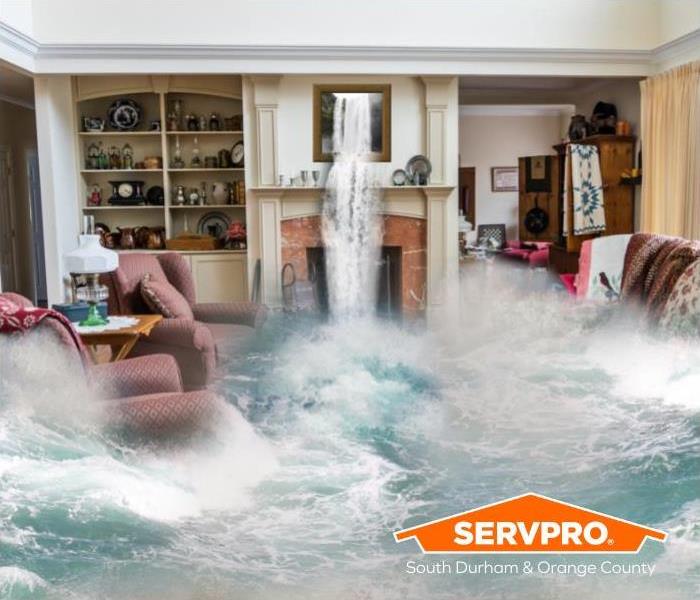 Residential Flooding
Residential Flooding
Summer vacations are in full swing as children wrap up the school year. Whether a vacation is a long weekend or extends over several weeks there is always the potential for water damage to occur while the vacationers are away unless steps are taken to prevent it. In the about the same time, it takes to load the car for a vacation safety precaution can be taken to assure that if there is any water damage can be held to a minimum.
The first thing any homeowner can do is to is to identify both the individual and main water shut offs for the home. Once the shut offs are identified turn them clockwise to tighten. This cuts the water to the unit and will minimize any water damage to only water left inside the pipes. Internal water offs are the hot and cold-water valves underneath sinks and vanities as well as toilet supply lines and the hot and cold-water knobs to the washing machine.
Additionally, a monitored water sensor can be added to a monitored security system which can alert you of water damage so it can be mitigated quickly. These simple and quick steps have the potential of saving you thousands of dollars.
In the event that you have a water damage in Orange County and need mitigation and restoration services call SERVPRO of Orange County at 919-245-0788.
Bound Water and Why Building Materials Must Be Removed to Dry
6/22/2022 (Permalink)
It is a common occurrence that clients will call with a need for mitigation service due to water damage caused from any number of sources, including a burst pipe, toilet supply line, ice maker line, overflowed washing machine or washing machine as well as storm related water damage. One common fact is that most water damage restoration will require the removal of some building materials due to bound water. Bound water is water that becomes trapped underneath flooring, inside walls or behind molding. If bound water is not removed it provides the perfect catalyst for secondary damage such as delamination of impacted walls, flooring, odor, and mold growth.
Professional remediation entails only the removal of areas that are impacted and can’t be dried effectively any other way. In some cases, only the molding will be removed to expose the wet drywall. Then holes will be placed in the drywall at the molding level so air movers can concentrate airflow behind the drywall to dry bound water. In cases where water gets underneath vinyl or laminate flooring, the flooring must be removed because the flooring itself acts as a vapor barrier preventing the drying process.
All professional remediators dry according to the standards set by the IICRC S500 otherwise known as the Institute of Inspection Cleaning and Restoration Certification. The standards set forth by the IICRC S500 are recognized by all insurance companies and their adjusters as it relates to water damage claims. Only impacted building materials supported by the IICRC S500 are removed by professional remediators such as SERVPRO of Chapel Hill and North Orange County.
If you have a water damage small or large call (919)245-0788 for fast, efficient service. Like our motto, “Like it never even happened.”
Categorically Speaking
5/31/2022 (Permalink)
Categorically speaking not every water damage is the same and as a result is not mitigated in the same manner. This fact is critical to assure safety. The Institute of Inspection Cleaning and Restoration Certification or IICRC in the water damage restoration certification class categorizes water damage in three categories.
- Category 1 is water damage that results from clean water. A broken pipe, a ruptured ice maker line or supply line from a toilet are all Category 1 damage at the point of origin.
- Category 2 is water damage that is referred to as gray water. This water contains microorganisms or other particulates. A washing machine that overflows with detergent and dirty clothes mixed in with the water is an example of gray water or Category 2 water damage. It is also important to note that a Category 1 water damage that goes untreated for a day or more can become a Category 2 or 3 as the water absorbs contaminants from the things it encounters.
- Category 3 water damage is a water damage from a grossly contaminated source such as sewage water. Category 3 water damage contains bacteria that can cause sickness.
When a professional mitigation and restoration company treats a water damage one of the first things, they look at is the category of the water. If the water damage originates from a clean source drying methods are far less aggressive than in Category 2 or 3, where some impacted materials must be removed and discarded for safety reasons.
Dry to the Touch is the Wrong Standard of Structural Drying
4/8/2022 (Permalink)
It’s 4:30pm on a Friday evening at a local apartment complex, when the maintenance department receives a call of a burst pipe to a dishwashing machine in a tenant occupied unit. The maintenance guy jumps on his golf cart with a shop vacuum, a mop and single air mover. Upon entry he cuts the water off to the dishwasher, extracts the visible standing water, sets up the air mover and runs back to the shop and grabs a dehumidifier. He returns and sets up the dehumidifier and tells the tenant he will return on Monday to get the equipment. What’s wrong with this picture? Didn’t the maintenance guy do this job and properly mitigate this water damage?
Sadly, he did not do the job according to the standards of professional drying as established by the IICRC S 500. The IICRC S500 describes the procedures and precautions to be taken when performing water damage restoration in commercial and residential buildings. This is the standard used by water damage restoration professionals to best certify that building materials are properly remediated and dried to prevent health hazards and prevent secondary damage.
What did the maintenance guy do wrong?
- He did not use a moisture meter to see how far the water progressed. This would enable him to correctly identify all areas that were wet so they could be dried properly.
- He was not able to identify if water was bound underneath flooring that could not be dried.
- He was not able to identify water that may have seeped underneath the cabinets or address the wet cabinets.
- There is no assurance of a balanced drying system.
Any areas where bound water remained trapped creates the opportunity for secondary damage such as microbial growth to occur. To properly address these issues, knowing what is wet is critical and that can not be done by visual assessment or by the touch. This can only be done with a moisture meter and know how to read it and understand what a correct drying goal is for the building materials being dried. Additionally, if water had progressed underneath vinyl or laminate flooring, the only proper way to dry it is to remove it. If water was trapped underneath the cabinets, the toe kick must be removed to get air into the cavity so that drying can occur. Also having a balanced drying system is critical. The moisture that is changed from liquid to gas using airflow created by the air movers must be captured by the dehumidifier. If there is more evaporation than dehumidification the excess moisture will seep into other moisture accepting materials potentially causing them to be damaged.
Also, not properly identifying the category of water damage creates the potential for health hazards.
There are standards for clean water, grey water and black water and knowing how to identify them and the procedure for proper remediation is essential for proper drying and safety. The maintenance guy treated the grey water from dishwasher the same way as clean water. There was no antimicrobial or disinfectant used to sanitize the affected material. This along with the other things that failed to address the standard for proper drying could have serious consequences.
If you are a property management company that understands the benefits of proper restorative drying and can appreciate the value of paying more to do the job right and alleviate the risks associated with doing it wrong, call SERVPRO of Orange County for all your future loses, at (919)245-0788.
Q&A Can High Humidity Cause Water Damage?
3/4/2022 (Permalink)
A homeowner exclaimed, “The air in my house feels heavy, and I can’t stand it.” The homeowner wanted relief. The conditions were unbearable, and went beyond the way it made him feel. There was the smell or malodor of mustiness and the appearance of opaque, greyish dots on the walls and on clothing. He wanted answers, and in addition to the cause, the answer to the question, can high humidity be the culprit? More eloquently stated, “Can high humidity cause water damage?”
The answer to this question requires an understanding of humidity and if it has any attributes that relate to water. Humidity or Relative Humidity is the amount of vaporized water that is contained in the air. Relative humidity had a direct correlation to temperature. The high the temperature, the greater the percentage of water vapor the air is able to hold. The lower the temperature the less moisture or water vapor the air can contain. When air reaches its saturation point, which is 100% capacity of the amount of water vapor it can hold t that temperature, the vapor will turn from gaseous state into a liquid. This is the principle that causes rain. When there is too much humidity in a house or building, water damage can occur if not quickly remedied.
If the relative humidity inside a home or building exceeds 60% the conditions for mold growth are suitable. Mold has the ability to grow 48-72 hours. Additionally high humidity left unchecked can rust metal. The excessive moisture in high humidity will be absorbed into fabrics and hygroscopic or water loving materials. This can result is discoloration and mold growth on these materials. High humidity can cause water damage and it is important to fix the cause quickly. The first thing to do is to find the source and correct it. Second start the process of dehumidification. Third remediate any mold if present. These three things are best accomplished by calling professionals to assess and correct the problems. SERVPRO of Orange County is a valuable asset in helping commercial businesses and homeowners deal with water damage resulting from high humidity. Contact us at (919)245-0788.
Understanding Waterproof Laminate Flooring and Water Damage Restoration
1/28/2022 (Permalink)
Laminate Flooring is one of the most popular flooring options that homeowners choose for its decorative, functional, durable and cost efficient properties. Laminate floor gives the appearance of real hardwood floors at a fraction of the cost. These floors are composed of a laminate surface over an image layer bonded to compressed particle board that interlocks with adjoining pieces. Traditional laminate flooring is subject to swelling and delamination if it gets wet. When water gets inside the joints and absorbs into the particle board substructure the results are catastrophic and the flooring must be removed and replaced. However; there is a new version of laminate flooring that touts that the flooring is waterproof.
Waterproof laminate flooring has new features including:
- Waterproof seal: First, the surface features a water-repellent seal that keeps spills and moisture from the core.
- Watertight joints: Each plank locks together tightly to prevent water from seeping through. Some waterproof laminate flooring features bevels that wrap over the plank’s edges for even better moisture protection at the joints.
- Water-resistant core: Then, waterproof laminate’s core layer is made of compressed high-density fiberboard (HDF) with resins. This makes it less susceptible to swelling and ensures better water resistance.
These floors can be highly effective if the edges are sealed against the walls to prevent water from getting underneath the floors. If the edges are not sealed and water intrudes between the laminate and the subfloor the flooring will still require removal because the water will be trapped between the laminate, the membrane, and the subfloor. The trapped water cannot be dried until the laminate flooring is removed. If however; the laminate flooring is manufactured with the bottom membrane adhered to the core, drying can occur if there is a crawlspace that would allow the flooring to be dried from the bottom though the subfloor. If you have water damage, contact the specialists of SERVPRO of Orange County at 919-245-0788.






 24/7 Emergency Service
24/7 Emergency Service

